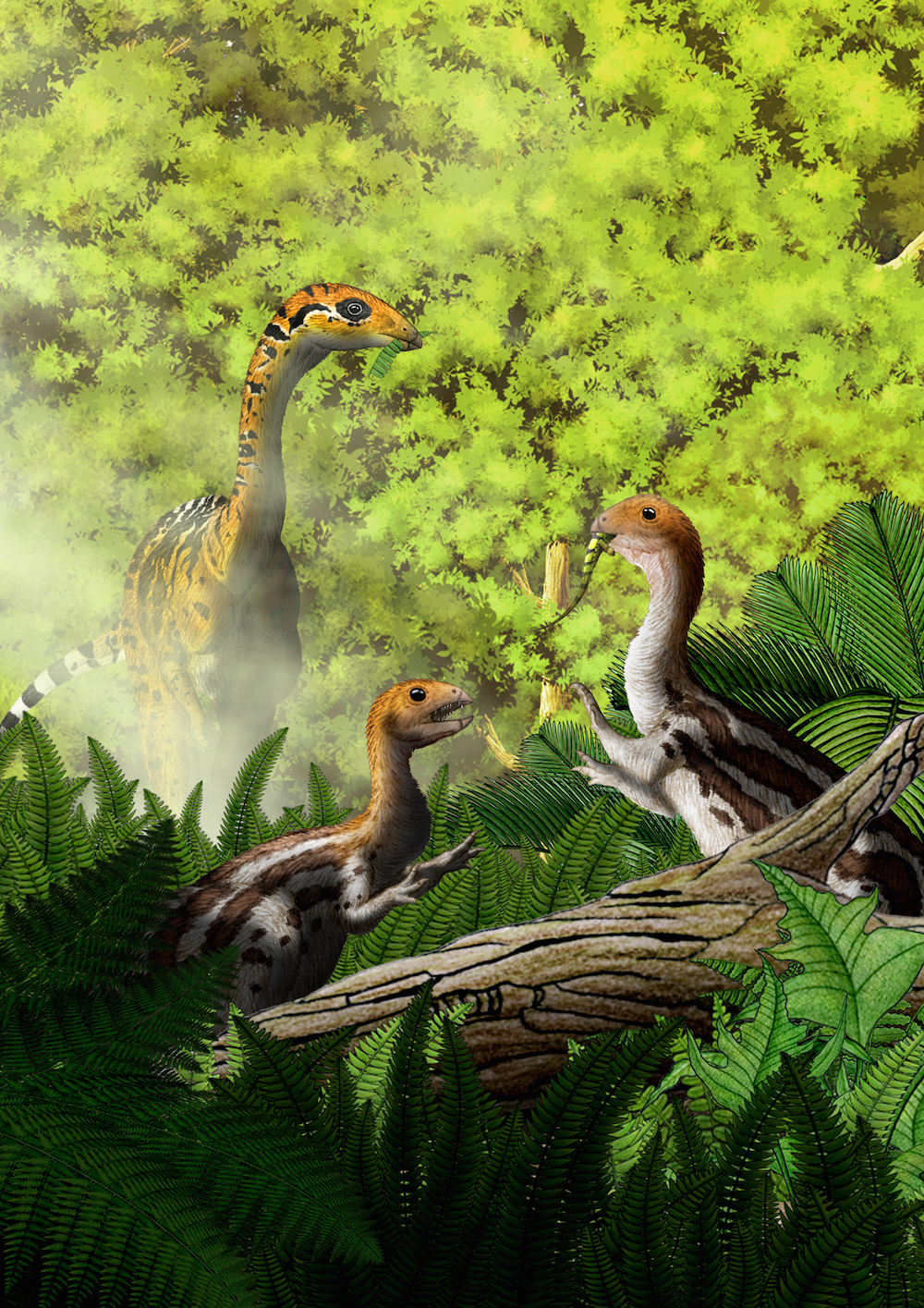Weird Dinosaur Species Had Teeth Only in Youth

By the time they were 3 years old, ostrich-like dinosaurs called Limusaurus inextricabilis had lost all of their pointy teeth, and lived the rest of their lives as toothless beasts, a new study finds.
This dental undoing changed the mealtime options for this dinosaur, which lived about 160 million years ago. As a baby, L. inextricabilis was likely an omnivore or carnivore, but once it lost its pointy chompers, it transitioned to an herbivore, the researchers said.
This drastic alteration may help to explain why birds have beaks, but no teeth, they said. [Photos: See How Birds Evolved from Dinosaurs]
The finding is based on years of research, said study co-author James Clark, a professor of biology at The George Washington University in Washington, D.C. From 2001 to 2011, he and study co-author Xu Xing, a scientist at the Key Laboratory of Vertebrate Evolution and Human Origins at the Chinese Academy of Sciences in Beijing, periodically traveled to the far western Gobi Desert to excavate fossils from the Jurassic-age Shishugou Formation.
The formation isn't too far from where the desert scenes in the movie "Crouching Tiger, Hidden Dragon" were filmed, Clark said.
"It's a phenomenal place to work — there are lots of fossils," Clark told Live Science. In particular, they found specimens from 19 L. inextricabilis individuals, ranging in age from baby to adult (less than 1 year old to at least 10 years old), all of which likely died after getting stuck in mud pits.
"As we cleaned these things up, it was pretty obvious that the babies had teeth and the adults did not have teeth," Clark said.
Sign up for the Live Science daily newsletter now
Get the world’s most fascinating discoveries delivered straight to your inbox.
Tiny and pointy
At first, the researchers wondered whether the baby and adult specimens were the same species. "But it's pretty unlikely that you would have just the juveniles of one species hanging around with the adults of another," Clark said. Moreover, "they share all of these features; they're nearly identical in everything but the teeth," he said.
Some of those features included an ostrich-like body with short arms, clawed digits and a long tail. L. inextricabilis was a theropod (a mostly carnivorous, bipedal dinosaur that is the ancestor of birds), but unlike some theropods, such as the feathered Velociraptor, it's unclear whether L. inextricabilis had feathers, Clark said.
The babies were small — just over a foot (0.3 meters) long — and the adults could grow up to about 8 feet (2.4 m) in length, Clark added.
But the adults had toothless beaks, whereas the juveniles had jaws with up to 18 tiny, pointy teeth, each just a few millimeters long, he said.
"Animals that lose all of their teeth as they grow up are rare today, [but] some examples include the duck-billed platypus and some species of catfish," said study co-author Josef Stiegler, a doctoral student of biological sciences at The George Washington University. "This is the first time this characteristic has been recognized in a reptile, and the first time for any animal in the fossil record." [Images: How the Bird Beak Evolved]
Diet change
To figure out the creatures' diets, the researchers examined carbon and oxygen isotopes (variations of an element with different numbers of neutrons in their nuclei) of the fossilized bones and teeth. These remains contain a wealth of information; by looking at the concentrations of certain isotopes, the scientists were able to determine what types of food the dinosaurs ate.
The researchers then compared the L. inextricabilis isotopes with those of dinosaurs that are known to be either strict carnivores or herbivores. They found that the youngest babies had diets similar to those of the older dinosaurs, likely because the adults were feeding them.
Once the babies were slightly older, however, they were either omnivores or carnivores, the isotopic analysis suggested, Clark said. After the teeth were lost, the dinos' diets reflected that of an herbivore.
Moreover, the older dinosaurs had gastroliths in their stomachs — basically, stones that break up food. But the younger dinosaurs did not have gastroliths, indicating that they didn't need them, likely because they could chew food with their pointy teeth, Stiegler said.
"We usually think about the evolution of toothlessness in terms of animals having fewer and fewer teeth as a lineage evolves," Stiegler said. But this finding suggests that this isn't the case, and that toothlessness evolved several times in different species.
"This finding suggests that the evolution of toothlessness may often involve the interplay between the development of individuals and long-term evolutionary changes," he said.
The findings were published online today (Dec. 22) in the journal Current Biology.
Original article on Live Science.

Laura is the archaeology and Life's Little Mysteries editor at Live Science. She also reports on general science, including paleontology. Her work has appeared in The New York Times, Scholastic, Popular Science and Spectrum, a site on autism research. She has won multiple awards from the Society of Professional Journalists and the Washington Newspaper Publishers Association for her reporting at a weekly newspaper near Seattle. Laura holds a bachelor's degree in English literature and psychology from Washington University in St. Louis and a master's degree in science writing from NYU.









